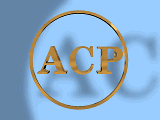American Catholic Press
16565 S. State Street, South Holland, Illinois 60473
|
||||||||||||||||||||||||
|
|
||||||||||||||||||||||||
|
by Father Michael Gilligan What kind of Sunday Lectionary do you need? There are several editions, so here are some suggestions to help you choose among them. As you know, there are three cycles of Scripture readings for Sunday Mass, A for the Gospel of Matthew, B for Mark, and C for Luke. Liturgical Press has a "classic edition" with all three cycles for Sundays. If you want a minimum number of books for church use, this might be your first choice. * * * Liturgical Press also has a "chapel edition." This book is just as complete as the classic edition. It is in a more convenient size, with smaller print. The chapel edition is useful for those who celebrate Mass with small groups or those who need a Lectionary for reference. It's easy to handle. * * * For parishes, there is another choice: the "ceremonial edition" of Liturgical Press and the Liturgy Training Publications (LTP) edition. These editions are both being made available in three separate books: one for cycle A, another for B, and a third for C. This is a great idea, originating with Bernard Benziger of Pueblo Publications, now owned by Liturgical Press. With separate books for each cycle, you can put just the right volume out in the sacristy, so that the lector cannot read from the wrong cycle; it's also easier for lector, deacon, and priest to find the right place quickly and easily. Moreover, both the ceremonial edition of Liturgical Press and the LTP edition are beautiful books, worthy of the Word of God. They stand out in processions and should help inspire reverence for the sacred text. The Lectionary readings themselves are presented in a clear format, in extra large print. As with the Leaflet Missal, page turns are avoided in the middle of the readings. In most parishes, then, it is this reviewer's opinion that the best choice will be either the ceremonial edition of Liturgical Press or the edition from LTP. Is there any difference between the two? Of course, the actual texts of both Lectionaries are identical. Differences are to be found only in the presentation and in the binding. In presentation, the ceremonial edition of Liturgical Press has some advantages. The typeface (17 point) is larger than that of LTP. There is also more space between the lines, making for easier reading. In the preference of this reviewer, the typeface chosen by Liturgical Press (Golden Cockerel) is more pleasing to the eye than that of LTP. Moreover, the Responsorial Psalm in LTP's Lectionary is presented in a smaller size, in italics, and without the use of bold type, even for the refrain; the same format is used for the Gospel Acclamation and its verse. The idea here, no doubt, is that these parts of the liturgy would normally be sung and so would not be used by the lector. That is probably a correct assumption for many parishes; but it does not, in my opinion, justify the use of italics. Such a typeface, even in a sans-serif style, is not easy to read. In binding, finally, the Liturgical Press edition is impressive and dignified, with the "noble simplicity" called for in the Constitution on the Liturgy. It is an attractive book. On the other hand, in presentation, LTP does a somewhat better job breaking out run-on sentences into sense lines. This layout will help the lector proclaim the text more effectively. The meaning of the Scripture will be more apparent, both to the one who reads and to those who hear. In this book, the Word of God is presented with excellent clarity. In binding, Liturgical Press provides the three books of cycles A, B, and C, all in red. LTP has a better idea. The books for the three cycles are bound in three easily distinguished colors. Moreover, the art work for the cover of the LTP Lectionary is striking, most worthy of the Word of God. No doubt some people will prefer the noble simplicity of the Liturgical Press edition. It is, indeed, a matter of personal preference. For this reviewer, however, in terms of binding, LTP's book is more attractive.
References:
|
|||||||||||||||||||||||
|
||||||||||||||||||||||||


